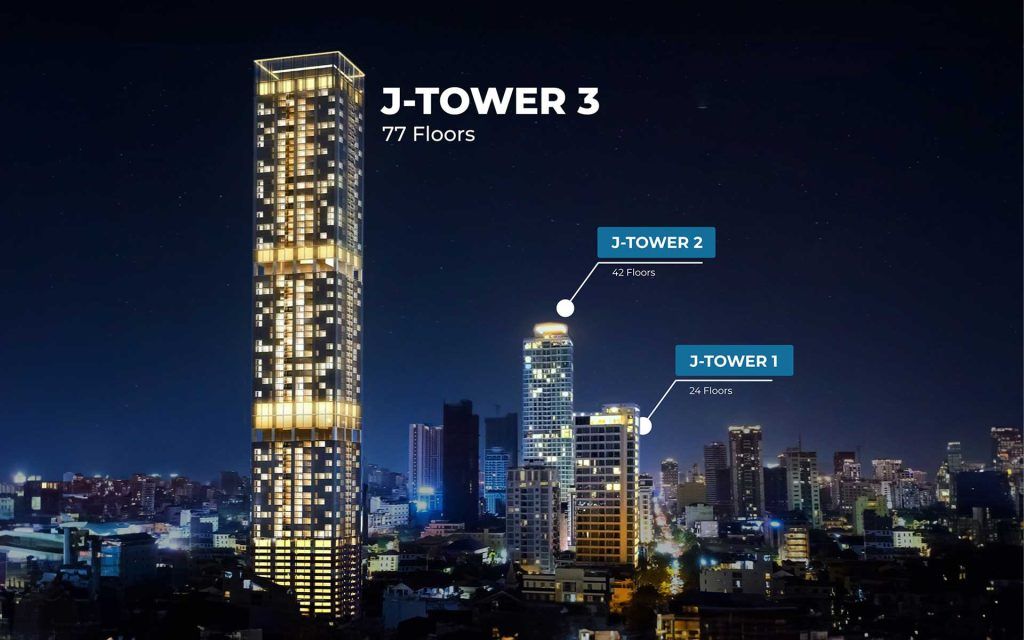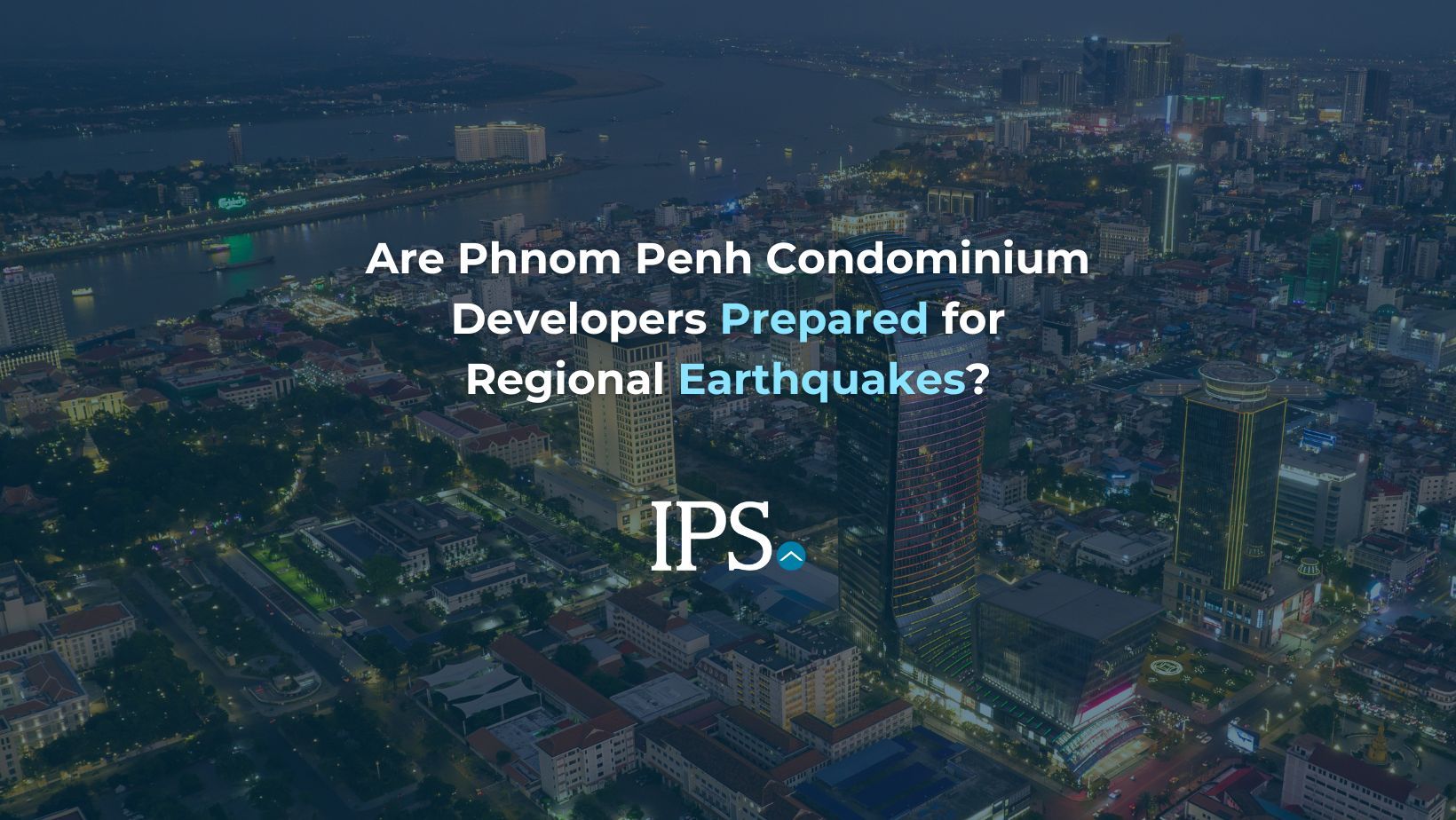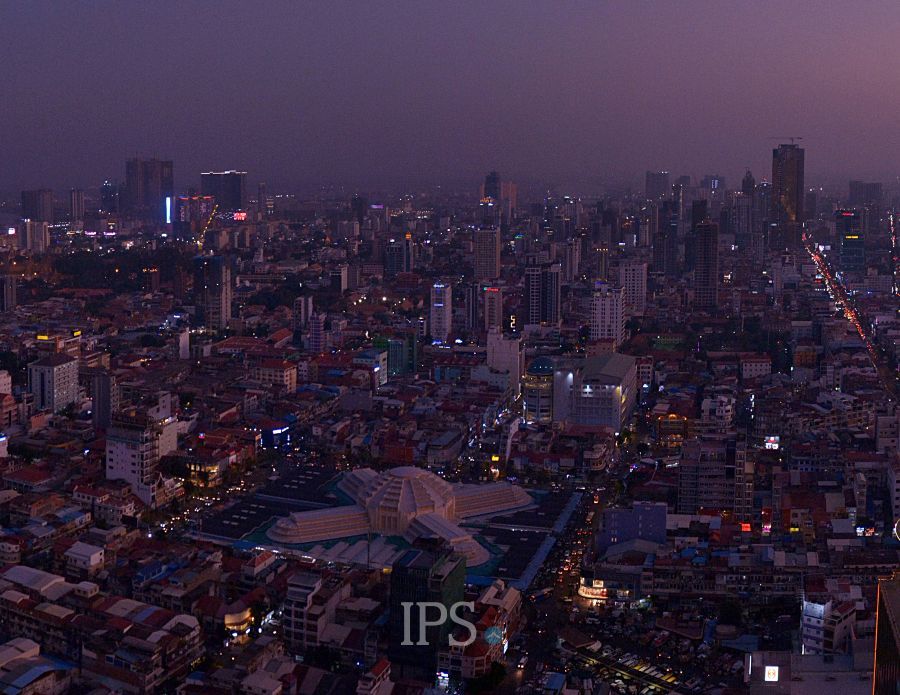On March 28th, a 7.7 magnitude earthquake hit Myanmar, causing devastation and sending shockwaves felt in Thailand, China and Laos. Tremors from the quake were also felt in Cambodian provinces bordering Thailand, such as Poipet.
However, thankfully the country remained largely unscathed by the disaster.
Nonetheless, this shocking event raises significant questions about the geographical and geological impacts of earthquakes in the region and the importance of preparedness for Cambodia and other Southeast Asian nations, with a high relevance to the property development industry – especially in the high-rise condominium and office sector.
Immediate Impacts of the Myanmar Quake:
The earthquake in Myanmar led to extensive destruction – thousands of buildings collapsed, and families were left grappling with loss. The death toll in Myanmar has risen above 2000 in the days that followed the quake.

Buildings destroyed in Mandalay, Myanmar, following the quake. Credit: Reuters
Thailand too experienced fear and chaos through widespread social media captures of the moment, as well as numerous deaths and injuries cause by building collapses.

Teams remove rubble from a collapsed under-construction building located in Bangkok, Thailand. Credit: Associated Press
In stark contrast, Cambodia maintained its calm. While the nation expressed their solidarity and support to those nations in the region that were adversely affected, the Kingdom remained largely unaffected by the seismic activity.
This discrepancy begs the question: Why?
Geological Insights:
Earthquake occurrence is primarily due to the tectonic movements beneath the Earth’s surface. Myanmar’s location in an active seismic zone, where the India Plate pushes beneath the Eurasian Plate, which accounts for its heightened vulnerability to earthquakes.
Cambodia, however, is situated further from these major tectonic activities, offering it a natural shield against such disasters. Due to its geographical location, it has historically experienced fewer and less severe earthquakes compared to other Southeast Asian countries located closer to active fault lines. This positioning provides a form of natural resilience against the destructive power recently witnessed in neighboring countries.

The above infographic demonstrates earthquakes at or above magnitude 4.0 in the Southeast Asian region between 1975 and 2025. While Cambodia is positioned between two major fault lines with high seismic activity, no major quakes have occured in the country in recent history. Credit: ScienceKonek
Additionally, Tanichu Assetment Co., Ltd., an experienced developer based in Phnom Penh, confirmed that Phnom Penh is less prone to major earthquakes than other regional urban hubs, such as Bangkok, Thailand, because there are no active fault lines under Phnom Penh, and the city will therefore be unlikely to be the epicenter of a major earthquake in coming years.
Meanwhile, while the ground in Phnom Penh is relatively soft, consisting of alluvial deposits (mostly river sand) from the Mekong, Tonle Sap, and Basac rivers; it is not as weak as the conditions found underground in Bangkok, for instance, noted the developer, which has clay layers below the surface.
To understand this geological strata, in 2014, Tanichu Assetment Co., Ltd, built the 16-storey J City condominium, and the 24-storey and 43-storey J Tower 1 and 2 condominiums. A boring test showed that at Phnom Penh’s BKK 1 district, the alluvial deposits extend up to 30 meters below ground level, after which it becomes solid bedrock.
The developer also drilled 36 meter piles at J City and J Tower 1 projects, 47 meter piles at the J Tower 2 project, and 80 meter, 100 meter, and 120 meter piles for J Tower 3 project, four times in total.
For J Tower 3, the final 67 meter pile is supported by very strong bedrock, as confirmed following a precise investigation by both the developer and supervisory agencies.
So far for J Tower 3, soon to be Cambodia’s tallest building when it is completed in 2028, the developer has driven nearly 140 piles, and as of April 1st, 2025, three final piles are necessary for the project’s foundation completion.
The above video demonstrates the J Tower 3 construction team nearing the completion of foundational piles, with only three final piles remaining as of April 1, 2025.
Lessons in Preparedness:
The impacts visible across the Southeast Asia region this week highlight the critical need for heightened earthquake preparedness. Regardless of a Cambodia’s natural protection, the global interconnectedness of tectonic shifts, and the inherent inability to totally predict future earthquakes, means that the event calls for lessons to be learned by both the public and private sector.
Importantly, urban planning in vulnerable areas should incorporate earthquake-resistant designs; meanwhile public education and emergency drills are vital to ensure greater community safety in the case of future earthquakes. This includes education of the public on how to react during and after an earthquake, including evacuation plans, the creation of emergency kits, and the identification of safe spaces within homes and buildings in the case of a major quake.
How Can Earthquake Risks Be Reduced?
Enhancing Building Standards:
One of the most critical steps involves the reinforcement of its construction codes. Strengthening building regulations to ensure structures are built with earthquake resilience in mind could dramatically reduce the damage caused by future tremors. This includes the use of materials and designs that are capable of withstanding significant seismic forces, potentially saving countless lives and preserving urban infrastructure in the case of another major regional earthquake.
Investing in Early Warning Systems & Boosting Disaster Preparedness:
The development and installation of advanced seismic sensors throughout the country could provide invaluable minutes or even seconds of warning before the tremors reach populated areas. An efficient and widespread alert system, capable of notifying the public through various channels, could significantly minimize injuries and fatalities. Early warnings allow people to seek shelter and enact predetermined safety measures, reducing the chaos and injuries in the case of another major regional quake.
Beyond physical infrastructure and technological advancements, the heart of minimizing earthquake damage lies in preparedness. Establishing well-equipped monitoring centers dedicated to seismic activity and training emergency responders in rapid disaster response techniques is paramount.
Property Developments in Phnom Penh that are ahead of the curve in Earthquake Preparedness:
J Tower 3 , by the Japanese developer Tanichu Assetment Co., Ltd, is one major residential project currently being constructed in Phnom Penh with an earthquake proof design, using advanced construction methods to ensure the building can withstand any significant seismic activity in the future.
Given that Japan is situated in a highly active seismic region, the developer of J Tower 3 is leveraging modern construction technology and techniques from examples in both Japan and the USA within its numerous projects in Cambodia in order to reduce risks of damage or collapse in the case of a major natural disaster, albeit extremely high winds or seismic activities in the region.
According to the developer, there are several factors that will protect residents of J Tower 3 in case Phnom Penh is affected by a major earthquake.

Most importantly, J Tower 3 is designed and constructed with an earthquake-resistant structure. The project includes a vibration-isolation structure, which is designed to combat both high winds and major earthquakes.
The project also uses SRC (steel reinforced concrete), meaning that the buildings structure will be able to fully withstand any bending caused by earthquakes or high winds.
As noted by Dr. Sok Ramsey, Structural Designer at the J Tower 3 project, “the structural system and lateral resisting system of the J Tower 3 building was designed with strong wind load resistance up to 170 kilometers per hour (as per Wind Tunnel Testing) and a performance-based Seismic Design capable of withstanding a Magnitude 6.0 earthquake.”
He added that, “Even though Cambodia is not located in an earthquake prone zone by the United States Geological Survey (USGS), the J Tower 3 project’s structural engineering team has still taken Seismic load into account for structural analysis and design to prevent any building damage or collapse in the case that an earthquake occurs in the vicinity in the future.”
Looking for a future proof property asset with above market returns? Secure one of the last remaining units at J Tower 3 with IPS Cambodia today!
• Introduction to Cambodia
» Introduction to Phnom Penh
» Introduction to Siem Reap
» Monarchy & Government
• Tourism & Residency
» Thriving Tourism Industry
» Visas in Cambodia
• Healthcare & Education
» Healthcare in Cambodia
» Education in Cambodia
» International Schools in Cambodia
• Technology
» The Rise of Technology in Cambodia
• Why invest in property in Cambodia?
• Why Invest in Condominiums?
» Condo Ownership Journey in Cambodia
• Why Phnom Penh is SEA’s New Real Estate Hotspot
• Cambodian Property Tax Guide
• Can Foreigners Own Land in Cambodia?
• Understanding Cambodian Property Titles
» Strata Title: Background, Benefits, Legal Value
• The IPS Cambodia Advantage
» Why Choose IPS?


